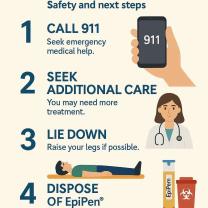How to safely stretch your Achilles tendon?
Stretching your Achilles tendon is important for maintaining flexibility and preventing injuries, especially if you engage in activities that put strain on this area, such as running or playing sports. Here are some techniques and tips for safely stretching your Achilles tendon:
1. Warm-Up:
- Start with a brief warm-up to increase blood flow to the muscles. Perform light cardiovascular exercises such as walking or cycling for 5-10 minutes.
2. Wall Calf Stretch:
- Stand facing a wall with your hands on the wall at shoulder height.
- Place one foot forward and the other foot back, keeping both heels on the ground.
- Bend your front knee while keeping your back leg straight.
- Lean towards the wall until you feel a stretch in your calf and Achilles tendon.
- Hold for 15-30 seconds and switch legs.
3. Towel Stretch:
- Sit on the floor with your legs stretched out in front of you.
- Loop a towel around the ball of one foot, holding onto both ends.
- Gently pull the towel towards you while keeping your knee straight.
- Hold the stretch for 15-30 seconds and switch to the other foot.
4. Heel Drop Stretch:
- Stand on a raised surface (like a step or curb) with the balls of your feet on the edge and heels hanging off.
- Slowly lower your heels below the level of the step, feeling a stretch in your Achilles tendon.
- Hold for 15-30 seconds and then rise back up.
- Repeat 2-3 times.
5. Seated Calf Stretch:
- Sit on the floor with your legs extended straight in front of you.
- Loop a resistance band around the ball of one foot and hold onto the ends.
- Gently pull the band towards you, feeling the stretch in your calf and Achilles tendon.
- Hold for 15-30 seconds and switch to the other foot.
6. Dynamic Stretching:
- Incorporate dynamic stretches into your routine, such as ankle circles and toe taps, before engaging in more intense activities.
Tips:
- Stretch regularly but be gentle, especially if you're new to stretching or have a history of Achilles issues.
- Avoid bouncing or jerky movements during stretches, as this can lead to injury.
- Listen to your body. If you feel pain (not to be confused with a gentle stretch), stop the stretch and consult with a healthcare professional if needed.
- Stretch both calves equally to maintain balance and symmetry.
Remember to consult with a healthcare professional or a physical therapist if you have pre-existing conditions or concerns about your Achilles tendon health. They can provide personalized advice based on your specific situation.
What stretching techniques are safe and effective for the Achilles tendon?
The Achilles tendon is a thick, fibrous band that connects the calf muscles to the heel bone. It is important to keep the Achilles tendon flexible and strong to prevent injuries such as tendinitis, rupture, and plantar fasciitis.
Safe and effective stretching techniques for the Achilles tendon include:
- Calf stretch: Stand with your feet shoulder-width apart and your toes pointed forward. Lean forward from the hips, keeping your back straight. You should feel a stretch in the back of your calf. Hold the stretch for 30 seconds and repeat 3 times.
- Wall stretch: Stand facing a wall with your feet shoulder-width apart. Place your hands on the wall at shoulder height, and lean forward until you feel a stretch in the back of your calf. Hold the stretch for 30 seconds and repeat 3 times.
- Toe stretch: Sit on the floor with your legs extended in front of you. Grasp your toes with your hands and gently pull them towards you. You should feel a stretch in the back of your calf. Hold the stretch for 30 seconds and repeat 3 times.
When stretching the Achilles tendon, it is important to follow these guidelines:
- Start slowly and gradually increase the stretch.
- Do not bounce or jerk the tendon.
- If you feel pain, stop the stretch immediately.
How can stretching routines be tailored to prevent Achilles tendon injuries?
To prevent Achilles tendon injuries, it is important to incorporate stretching into your regular exercise routine. You should stretch your calves before and after any activity that involves running, jumping, or other high-impact movements.
Here are some tips for tailoring stretching routines to prevent Achilles tendon injuries:
- Stretch for at least 30 seconds each time.
- Stretch 3 times a week.
- If you are new to stretching, start slowly and gradually increase the duration of your stretches.
- If you have any pain or discomfort, stop the stretch immediately.
In addition to stretching, there are other things you can do to help prevent Achilles tendon injuries:
- Wear supportive shoes that fit well.
- Warm up properly before exercising.
- Listen to your body and rest when you need to.
By following these tips, you can help keep your Achilles tendon healthy and prevent injuries.













